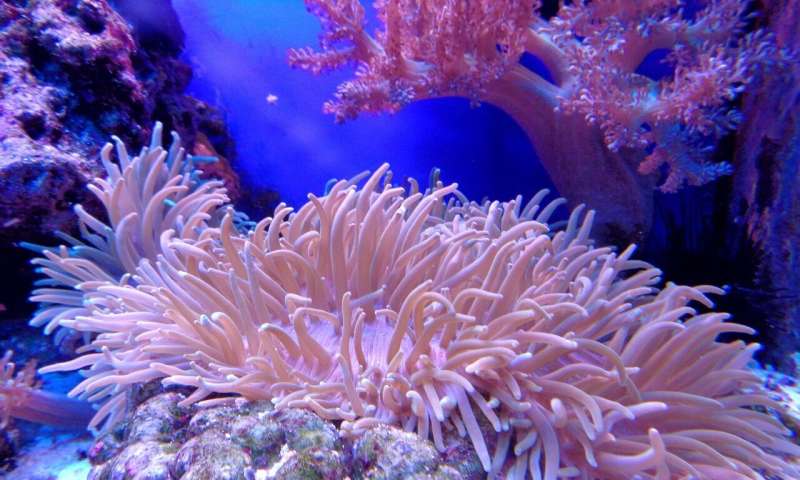Search and rescue: Researchers on mission to save the coral reefs of South Florida

A research ship that located the black box of a crashed Air France jet has embarked on a scientific expedition to the Florida Keys, where a mysterious disease is burning through coral reefs.
The disease kills coral tissue, leaving lifeless skeletons on centuries-old reef structures. First noticed in the Miami area nearly five years ago, the disease has spread north to the reefs off Broward, Palm Beach and Martin counties, threatening structures of vital important to the region's marine environment and economy. And it is spreading south through the Florida Keys.
"The state of the Florida reef tract is dire," Erinn Muller, a scientist from Mote Marine Laboratory, said at a news conference Wednesday aboard the 184-foot ship Alucia, docked in Miami. "We are losing corals at an unprecedented rate, and this disease outbreak is unprecedented in nature and it's affecting some of our most valuable species, ones that build the coral reef that we rely on."
The Alucia is halfway through a detailed survey of the reefs from the Dry Tortugas to Biscayne Bay, attempting to gauge the health of the Florida Keys reefs and to make progress toward discovering the cause of the disease. Although many government and academic scientists have been studying the disease, participants in the expedition said they hoped they could provide detailed data that could be shared among scientists.
Also participating in the expedition are scientists from Woods Hole Oceanographic Institution, Scripps Institution of Oceanography, and OceanX, an environmental and scientific organization that's leading the expedition.
During the expedition across the Keys, scientists will document the progress of the disease, taking thousands of photographs of the reefs. Since the cause of disease is suspected to be some sort of bacteria, they will sample seawater around the coral and sequence the DNA of any bacteria they find in it.
The disease, known as Stony Coral Tissue Loss Disease, has struck about half of the 45 reef-building coral species found off Florida's southeast coast, according to the Florida Department of Environmental Protection.
The unprecedented spread of coral illness threatens the only barrier reef in the continental United States, ruining coral structures that are "as important as the sequoias and the redwoods," said Vincent Pieribone, vice chairman of OceanX and professor of cellular and molecular physiology and neuroscience at the Yale School of Medicine.
"You see 500-year-old coral being chewed up," he said. "This is stuff that survived Columbus."
While the cause of the disease remains undetermined, scientists said government agencies could do more to address known threats to corals that could make them more vulnerable to disease. These include global warming, pollution washing off land and making its way into the ocean, and treated sewage that flows into the ocean.
The expedition is funded by OceanX, a project of the family of hedge fund billionaire Ray Dalio, and by Bloomberg Philanthropies' Vibrant Oceans Initiative, backed by former New York Mayor Michael Bloomberg.
As important as the extent of the disease is what happens after it passes through. Comparing it to a wildfire, the scientists said some corals survive it, providing the possibility of regrowth.
"What gives us some hope is there are survivors within some of the sites that we have visited," said Muller, of Mote Marine Laboratory. "Those survivors have the chance to grow and repopulate."
©2019 Sun Sentinel (Fort Lauderdale, Fla.)
Distributed by Tribune Content Agency, LLC.



















